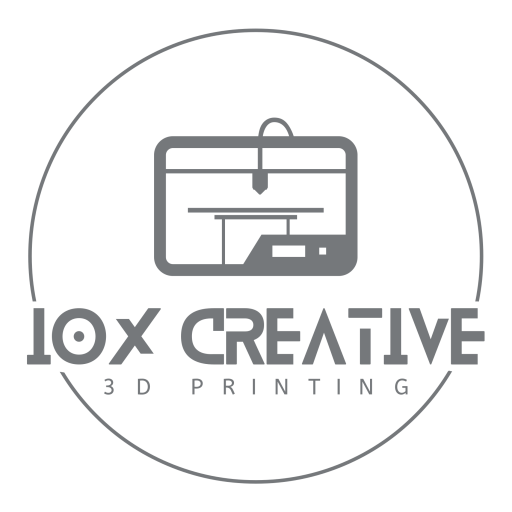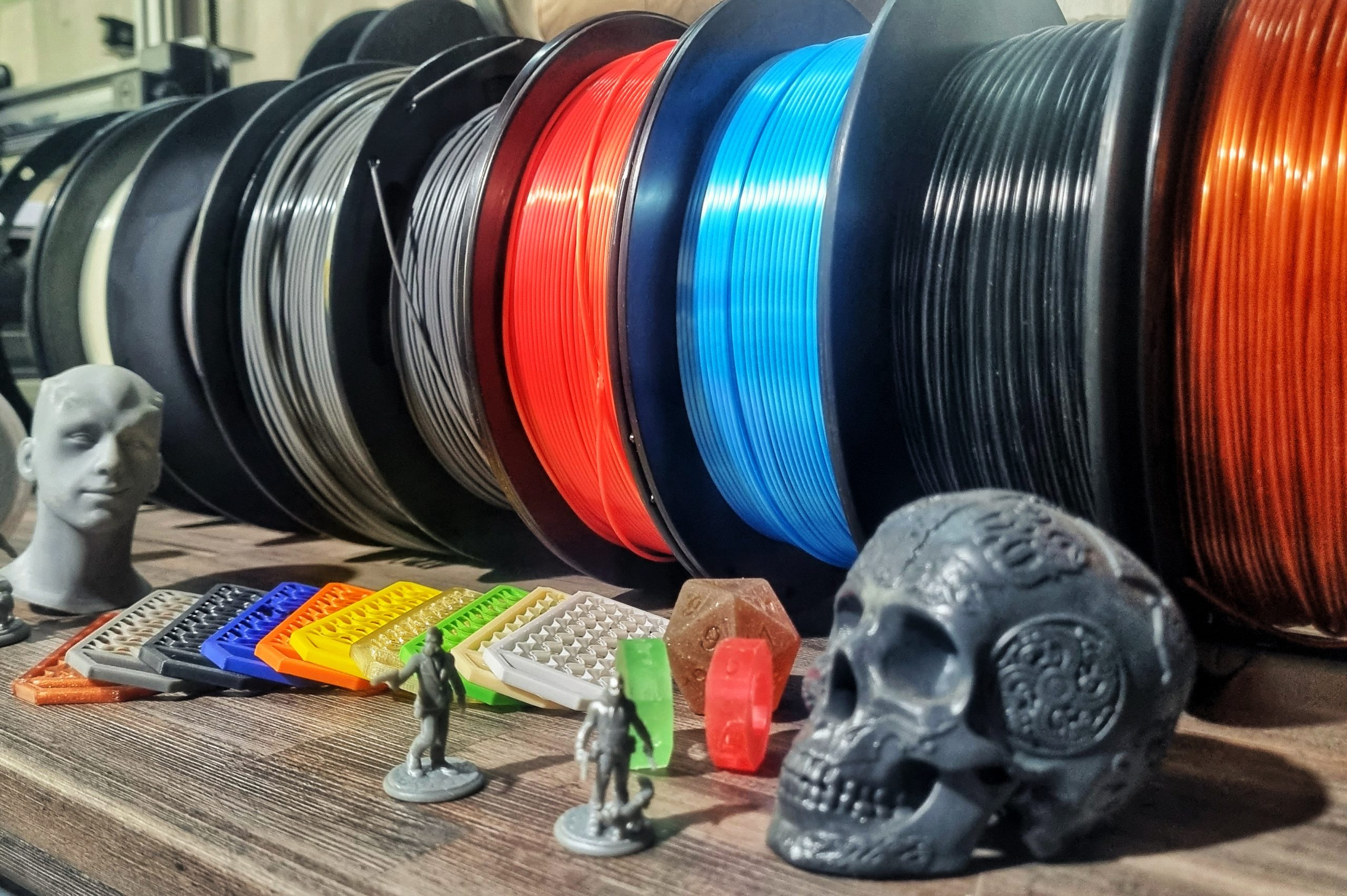Carbon Fiber Infused Nylon
Carbon fiber nylon is best suited for industrial applications that require a combination of strength, durability, and lightweight properties producing parts and components in various industries such as aerospace, automotive, robotics, and engineering.
The carbon fiber reinforcement enhances the mechanical properties of the nylon filament, making it stiffer, stronger, and more rigid than traditional nylon filaments. This combination of materials offers excellent tensile strength, impact resistance, and dimensional stability.
Some specific applications where carbon fiber nylon filament excels include:
- Aerospace components: Carbon fiber nylon filament is used to create lightweight yet strong parts for aircraft and spacecraft, reducing overall weight and improving fuel efficiency.
- Automotive parts: It is employed in the production of lightweight and high-strength components like brackets, panels, and interior trims.
- Robotics: The filament is utilized to fabricate sturdy and lightweight robot parts, enhancing their performance and agility.
- Engineering prototypes: Carbon fiber nylon filament is a popular choice for creating functional prototypes due to its strength and ability to withstand mechanical stress.
- Sports equipment: The material is used in manufacturing sports-related products like bicycle frames, skateboards, and drone parts, where lightweight and robust properties are crucial.
- Industrial machinery parts: It can be employed to create durable and reliable parts for various machines and equipment.
Overall, carbon fiber nylon filament is favored in applications where the combination of strength, toughness, and low weight is essential for achieving optimal performance and efficiency.
IOX Creative Flexible Filament
the Flexible filaments IOX use are specialized 3D printing known for their elasticity and flexibility. Unlike traditional rigid filaments like PLA or ABS, flexible filament can be stretched and deformed without breaking, making it suitable in various applications that require parts with soft and bendable properties.
Some specific applications where IOX Flexible filament excels include:
- Rubber-like prototypes: These filaments are ideal for creating prototypes of products that will be made from rubber or elastomeric materials in the final manufacturing process. It allows designers to test and evaluate the functionality of flexible parts before committing to expensive production methods.
- Gaskets and Seals: gaskets, seals, and other similar components that require a combination of resilience and deformability to create a tight and secure fit between different parts.
- Wearable Technology: In the field of wearable devices, such as smartwatches, fitness trackers, and medical wearables, this filament can be used to produce comfortable and flexible bands or casings that conform to the shape of the user’s body.
- Phone Cases and Covers: These materials are popular for creating protective cases and covers for smartphones, tablets, and other electronic devices, offering shock-absorption and impact resistance.
- Prosthetics and Orthotics: Special Flexible filaments are sometimes employed in creating custom prosthetics or orthotic devices, providing a balance of strength and flexibility for improved comfort and functionality.
- Automotive Parts: Our Flexible filaments can be utilized in automotive applications to produce custom grommets, bushings, and other parts that require a certain level of flexibility and vibration dampening.
Overall, IOX flexible filaments are valuable for projects that involve parts or objects with a degree of elasticity, impact absorption, and deformation capabilities. Their ability to create soft and bendable components opens up possibilities for innovative and practical applications in various industries.
Conductive PLA
Conductive PLA is a specialized filament that contains conductive additives, typically carbon-based materials like carbon black or graphene. This unique combination of materials imparts electrical conductivity to the printed objects, allowing them to conduct electricity.
It is essential to note that the electrical conductivity of conductive PLA is generally lower than that of metals or more specialized conductive materials. However, for certain low-voltage and low-current applications, conductive PLA can be a cost-effective and convenient solution.
As with any conductive material, proper design considerations must be taken into account to ensure proper electrical performance and safety. Additionally, the conductivity of 3D printed objects may be influenced by factors such as layer adhesion, infill density, and post-processing techniques.
Here are some key features and uses of conductive PLA:
- Electrical Conductivity: Conductive PLA allows electricity to flow through the printed objects, making it suitable for applications requiring electrical connections or conductivity.
- Material Compatibility: Conductive PLA can be combined with non-conductive PLA or other materials to create objects with both conductive and non-conductive properties.
- Mechanical Strength: Depending on the specific formulation, conductive PLA can retain some of the mechanical properties of regular PLA, such as rigidity and durability.
- Electronics Prototyping: Conductive PLA is commonly used for electronic components and prototypes like circuit boards, connectors, and sensors.
- Electromagnetic Shielding: It can be used to create housings and enclosures for electronic devices that require electromagnetic interference (EMI) shielding.
- Touch Sensors: Conductive PLA is suitable for 3D printing touch-sensitive surfaces or buttons, such as capacitive touch sensors.
- Static Dissipation: Objects made with conductive PLA can be used to dissipate static electricity, which is important in applications where static discharge could damage electronic components.
- Educational Purposes: Conductive PLA is often used in educational settings to teach basic electronics and circuitry concepts through hands-on projects.
- Wearable Technology: It can be used to create conductive traces or circuits for wearable electronic devices.
Overall, conductive PLA is a valuable material for combining 3D printing and basic electronics, allowing users to create functional and interactive objects with electrical conductivity.

